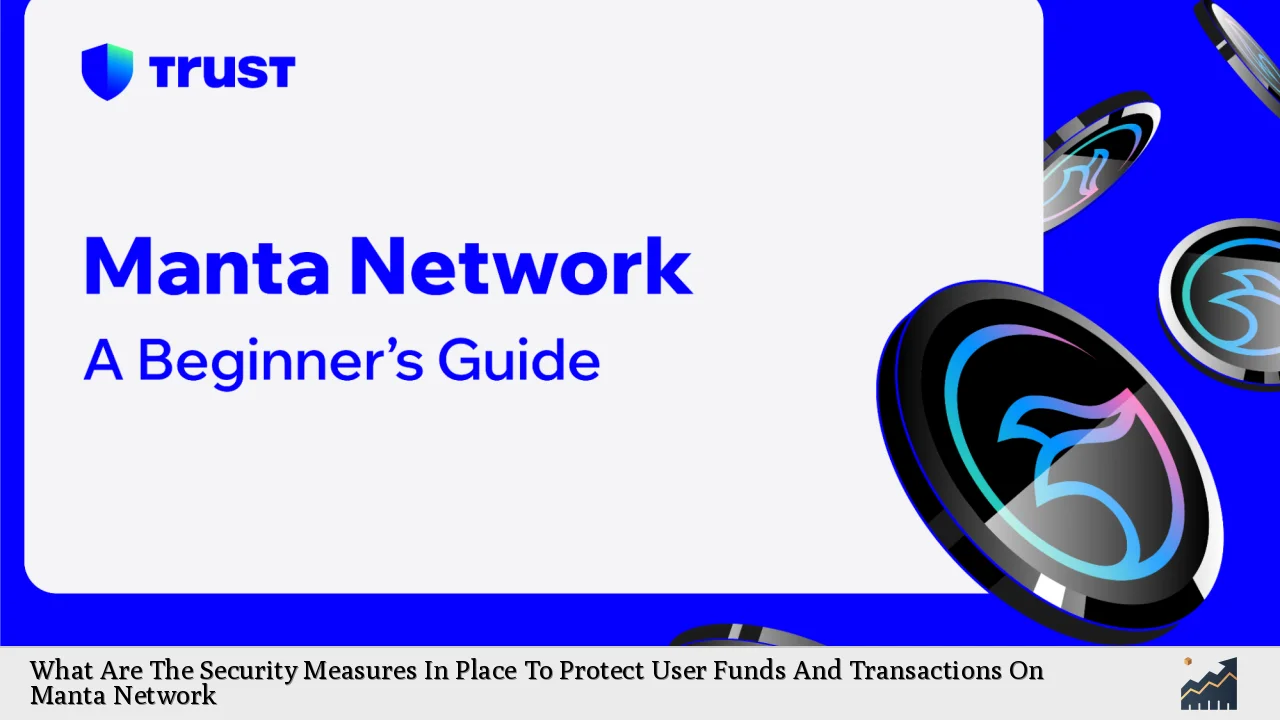Manta Network is a pioneering blockchain platform designed to prioritize user privacy and transaction security through innovative technologies. By integrating zero-knowledge proofs (zk-SNARKs) and a modular blockchain architecture, Manta Network ensures that user funds and transaction details are safeguarded against unauthorized access and malicious activities. This article explores the security measures implemented by Manta Network, providing insights into its market positioning, implementation strategies, risk considerations, regulatory aspects, and future outlook.
| Key Concept | Description/Impact |
|---|---|
| Zero-Knowledge Proofs (zk-SNARKs) | Enables transaction validation without revealing sensitive information, ensuring privacy and security. |
| Decentralized Anonymous Payment (DAP) | Enhances user anonymity by masking transaction details and identities during DeFi operations. |
| Modular Blockchain Architecture | Facilitates scalability and interoperability while maintaining robust security protocols across different layers. |
| zk-Soulbound Tokens (zk-SBTs) | Provides verifiable credentials without exposing user identities, enhancing privacy in KYC processes. |
| Governance and Staking | MANTA token holders participate in governance decisions, contributing to network security through staking. |
Market Analysis and Trends
The demand for privacy-focused blockchain solutions has surged as users become increasingly concerned about data breaches and financial transparency. Manta Network has positioned itself at the forefront of this trend by offering privacy-preserving features that cater to both individual users and enterprises seeking secure transaction environments.
Recent statistics indicate that the decentralized finance (DeFi) sector has grown significantly, with total value locked (TVL) in DeFi protocols reaching over $50 billion in 2024. Manta Network ranks among the top ten protocols by TVL, with approximately $475 million locked in its ecosystem. This growth is largely attributed to its innovative yield farming campaigns and privacy-focused offerings that attract users looking for secure financial transactions.
Implementation Strategies
Manta Network employs several strategic measures to enhance security:
- Zero-Knowledge Proofs: The core of Manta’s security architecture lies in zk-SNARKs, which allow users to validate transactions without disclosing any sensitive information. This technology ensures that while transactions are verifiable, the details remain confidential.
- Decentralized Architecture: By utilizing a modular blockchain structure consisting of Manta Pacific (Layer 2 on Ethereum) and Manta Atlantic (Layer 1 on Polkadot), Manta Network enhances scalability while maintaining high-security standards. This architecture allows for efficient processing of transactions while reducing latency.
- Anonymity Features: Manta Network incorporates decentralized anonymous payment schemes that obscure transaction details from public view. This feature is particularly crucial for users who prioritize discretion in their financial dealings.
- zk-SBTs for Identity Verification: The introduction of zero-knowledge soulbound tokens allows users to verify their identities without exposing personal information. This capability is essential for KYC processes in a privacy-centric manner.
Risk Considerations
Despite its robust security measures, Manta Network faces several risks:
- Cybersecurity Threats: The blockchain space has seen a rise in sophisticated cyberattacks. In 2023 alone, over $1.4 billion was lost due to hacking incidents across various platforms. Manta Network must continuously evolve its security protocols to mitigate these risks.
- Regulatory Scrutiny: As governments worldwide tighten regulations on cryptocurrencies and DeFi platforms, Manta Network must navigate compliance challenges while maintaining its privacy-focused ethos.
- Market Volatility: The cryptocurrency market is known for its volatility. Fluctuations in asset values can impact user confidence and participation rates.
Regulatory Aspects
Manta Network operates within a complex regulatory landscape that varies by region. The platform’s commitment to privacy may conflict with regulatory requirements aimed at increasing transparency in financial transactions. As such, it must balance user privacy with compliance obligations, particularly concerning KYC regulations.
The introduction of zk-SBTs aligns with regulatory expectations by enabling KYC processes without compromising user anonymity. This innovative approach could serve as a model for other platforms seeking to comply with regulatory standards while preserving user privacy.
Future Outlook
Looking ahead, Manta Network is well-positioned to capitalize on the growing demand for secure and private blockchain solutions. Its focus on interoperability will allow it to integrate with multiple blockchain ecosystems, enhancing usability for users across different platforms.
As the DeFi landscape continues to evolve, Manta’s emphasis on privacy-preserving technologies will likely attract more users seeking secure transaction environments. Furthermore, ongoing developments in zk-SNARKs and related technologies will enhance the platform’s capabilities, potentially establishing it as a leader in the privacy-focused blockchain sector.
Frequently Asked Questions About Security Measures on Manta Network
- What are zk-SNARKs?
zk-SNARKs are cryptographic proofs that allow one party to prove possession of certain information without revealing the information itself. This technology is fundamental to ensuring transaction privacy on Manta Network. - How does Manta ensure user anonymity?
Manta employs decentralized anonymous payment schemes that mask transaction details from public view, protecting user identities during financial transactions. - What role do zk-SBTs play in security?
zk-SBTs provide a method for verifying identities without exposing personal information, facilitating KYC processes while maintaining user privacy. - How does staking contribute to network security?
MANTA token holders can stake their tokens to help secure the network. Staking not only incentivizes participation but also enhances overall network stability. - What are the main risks associated with using Manta?
The primary risks include cybersecurity threats from hacking incidents, regulatory scrutiny regarding compliance with laws, and market volatility affecting asset values. - Is Manta compliant with global regulations?
Manta strives to balance user privacy with compliance obligations by implementing features like zk-SBTs that facilitate KYC processes without compromising anonymity. - How does Manta’s modular architecture enhance security?
The modular architecture allows for efficient processing of transactions across different layers while maintaining high-security standards through interoperability between various blockchain networks. - What future developments can we expect from Manta?
Manta is expected to continue enhancing its privacy-preserving technologies and expanding interoperability with other blockchain ecosystems as demand for secure financial solutions grows.
In conclusion, Manta Network exemplifies a forward-thinking approach to blockchain technology by prioritizing user privacy and transaction security through advanced cryptographic methods and a robust architectural framework. As it navigates the complexities of regulatory compliance and cybersecurity threats, its innovative strategies position it well within the evolving landscape of decentralized finance.

